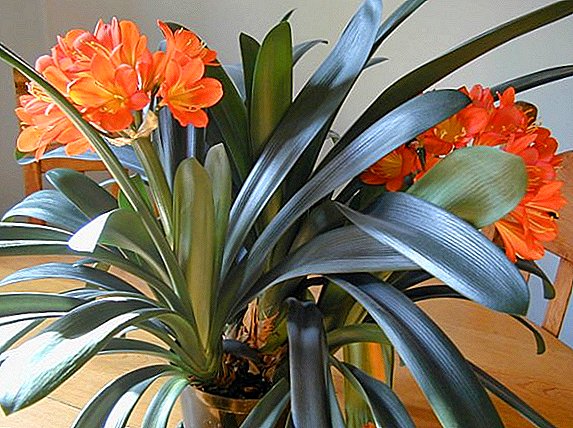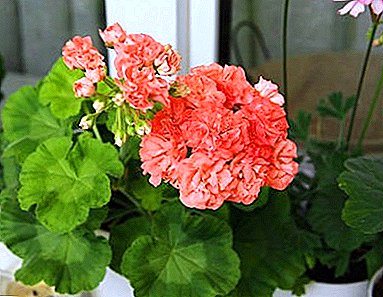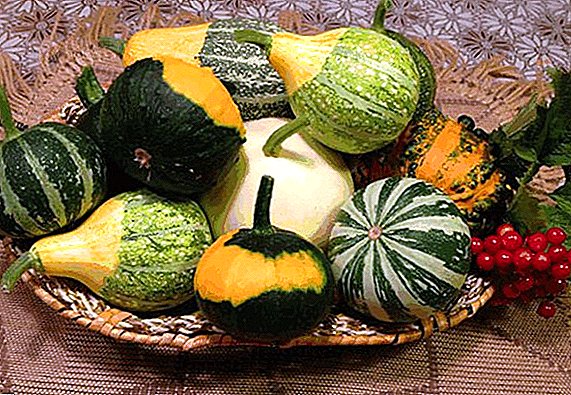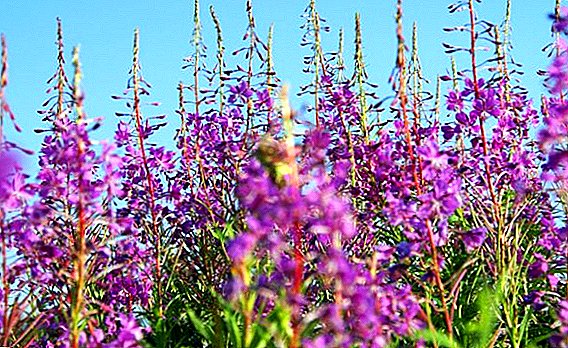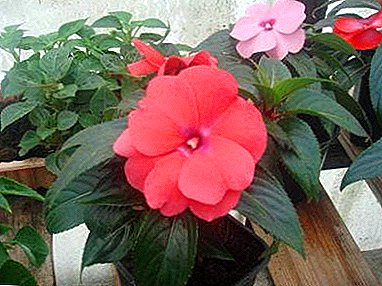
Balsam - a beautiful ornamental plant that is suitable for growing both at home and in the garden. There are many species of this flower, so the gardener always has a choice. Particularly popular balsam Waller or Waller. In recent years, thanks to the emergence of its resistant hybrids, this variety has become well established as a garden plant, unpretentious and pleasing with its bright colors.
This article will tell you what a Waller balsam is, how to care for it, what difficulties you may encounter when it is grown, and what diseases and pests can threaten the flower.
Botanical description and history
Balsamines originate from the forests of Asia and Africa. These are heat-loving plants that love moisture. Balsam Waller (Impatiens walleriana) has long been grown as a houseplant. People call him Vanka wet (there are small drops of moisture on the tips of the leaves) and Impatiens (when touched, he “scatters” the seeds).
In general, Waller's balsams are classic, just those that grow on window sills, and hybrid, suitable for flower beds. The second stunted (15-30 centimeters), richer in color and flowering more abundant. They withstand fluctuations in temperature and humidity, can tolerate heat in a flower garden. They are also able to grow at home, on a bright window sill blooming even in winter.
Reference! Hybrids can be bought in gardening stores, they look good in hanging pots for decoration.
Description of appearance and features
This is a perennial (in warm regions) bush plant with a height of 20 to 60 centimeters. He has upright juicy stems, heavily branched. The leaves are wide, large, oval in shape, pointed at the end, with jagged edges and light green color.
Their length is about 10 centimeters. Flowers 4 centimeters in diameter, either single or collected in few-flowered inflorescences. Pedicels long. Themselves flowers can be simple or terry and different shades (usually red or pink).
Hybrids are smaller in height - from 15 to 30 centimeters, branching stronger, give more colors, various shades of gamma. It grows quickly, blooms early and decorates the garden all summer. Rather unpretentious, it can grow in relative shade.
Photo of indoor flower - Vanya wet
Then you can see how Waller's Balsam looks like in the photo.




Growing difficulties
This species has some problems. The most common problems with Waller's balsam are listed below..
- Small, pale leaves. elongated stems. Lack of nutrients, cramped pot, high temperature, lack of lighting.
- Leaves fall, twist, stalks rot. Dampness, low temperature.
- Leaves dry and fall off. Dry air, high temperature.
- Loss of leaf color. Lack of lighting.
- Weak flowering or lack thereof. Lack of lighting, nutrients or excess fertilizer, especially nitrogen.
- Blooming flowering. Frost, cooling, overdrying of the soil, too big a pot, incorrectly chosen transplant time.
With all these troubles you can cope if you pay attention to the condition of the plant in time and take action.
Rules and tips on landing conditions
It is believed that balsam Waller difficult to grow from seed. Indeed, they should be sown in January or mid-March, if they are confident in quality, in sand or mixture with peat, under the obligatory additional lighting. Moreover, the seeds are located on the surface of the soil, slightly pressed into it, and on top of the pot should be covered with a film for better germination.
Condensate from it is important to shake off, so that they do not get sick fungal diseases. The temperature should be at room temperature, about 25 degrees. The shoot process takes from 7 to 14 days, during which it is important to control the humidity and air the seedlings. So that they do not stretch, you need to reduce the temperature to 17 degrees.
In an open ground grown-up seedlings of balsam Waller transferred in Junewhen the probability of frosts for grassy plants disappears.
Reference! You can also grow from cuttings, cut in the fall. They are grown in pots as indoor plants, and in the spring can be transplanted or left as desired at home. The requirements for the soil and conditions are similar.
Lighting and location
Grow well in penumbra and in the lighted areas. True, in direct sunlight, where the plant can burn leaves, it is better not to plant. Thermophilic, does not tolerate temperatures below 5 degrees. The best landing point is on a slope where the sun is delayed for a couple of hours a day, not more. If Waller's balsam grows at home, then choose any direction of the window, except the southern one. The temperature should not fall below 22-25 degrees.
Soil requirements
Loves light, fertile soil.. Does not tolerate excessive moisture, so it is important to observe moderation. It is better to water in the evening so as not to burn the leaves. When grown at home, one should not forget about fertilizing the soil with fertilizers, but in moderate amounts and not too often.
Home and outdoor care
 Balsam Waller rather unpretentious, does not require increased care. The soil should always be wet, but not excessive. In winter, for potted bushes, watering is reduced, produced after the earth dries. The leaves can be sprayed, the main thing - not during the direct hit of the sun. Fertilize from March to September every two weeks, if the flower is planted in open ground.
Balsam Waller rather unpretentious, does not require increased care. The soil should always be wet, but not excessive. In winter, for potted bushes, watering is reduced, produced after the earth dries. The leaves can be sprayed, the main thing - not during the direct hit of the sun. Fertilize from March to September every two weeks, if the flower is planted in open ground.
It is important to remember that the stems and leaves are especially fragile due to moisture saturation., therefore, they should grow either next to each other, as support from the wind, or in windless areas of the garden. It is better to remove the faded buds in order to preserve a beautiful appearance and give the new one a free flowering.
In the autumn, before the frosts, garden balsams of this variety are covered, and the pots are put into a warm room. It is undesirable to transplant from garden to container; it is better to root the cuttings for later growing from them.
Common diseases and pests
If you comply with all the conditions, the balsam Waller will not hurt. However, if you violate them, some problems arise with leaves, roots or flowering.
Of the pests particularly distinguished aphid, spider mite and whitefly. The second appears more often in dry hot weather. Soap baths and acaricide solution help him. From aphids and whiteflies relieves spraying drugs Aktara, Aktellik, Konfidor, Bi-58.
Breeding features
The plant is mainly grown from seed.. Take fresh, high-quality seeds. They are not used from hybrids, as they will not give the properties of parents Also propagated by cuttings that rooted in one to two weeks.
It is not allowed to have a high salt content in the soil and to maintain the optimum humidity and light for the variety. From cuttings you can grow a home bush without any problems. This method is preferable for beginner gardeners due to greater simplicity.
Waller's Balsam - a beautiful and long-flowering plant that can decorate any garden or home. His unpretentiousness and relative ease of care allowed him to become so popular with gardeners. The balsam of this variety will give only positive impressions and will definitely become one of the favorites among other plants.
We invite you to watch a video about the propagation of Waller balsam from seeds:


